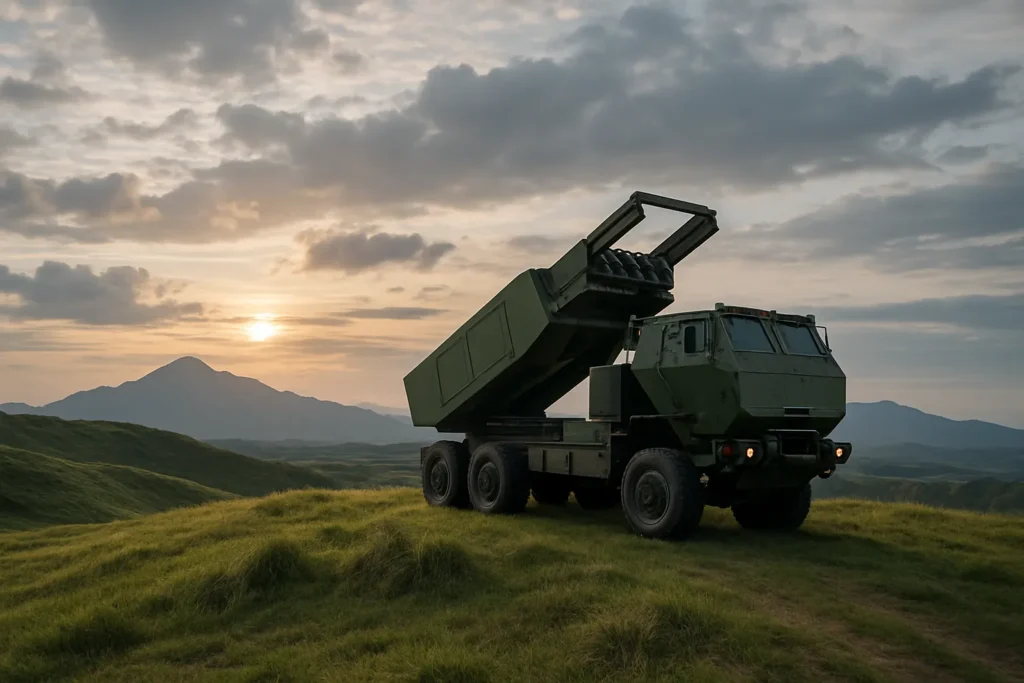New Rockets, Old Tensions: Taiwan’s Historic Live-Fire Test
On a misty morning at Jiupeng Base in southern Taiwan, an echoing roar marked a pivotal moment: the first ever live-fire drill of U.S.-supplied High Mobility Artillery Rocket Systems (HIMARS) on the self-governing island. While such military exercises are routine in many nations, the symbolism here was impossible to ignore. In an era where global headlines often feature Taiwan as a perilous flashpoint, this historic event sends shockwaves reaching far beyond the firing range in Pingtung County.
Unlike previous Taiwanese war games featuring aging Thunderbolt-2000 rockets with limited reach, the HIMARS system offers a quantum leap: with 300 kilometers of standoff range and deadly precision, Taiwan can now credibly threaten coastal military targets in China. Such firepower—with a pedigree of success against Russian forces in Ukraine—represents more than just hardware. It’s a message to Beijing and to the world: Taiwan will not simply fold in the face of authoritarian intimidation.
Beijing’s response fell along all-too-familiar lines, issuing stern statements and dispatching fresh “joint combat patrols” in the Taiwan Strait mere hours after the test. The saber-rattling is real. But beneath the bluster, Taiwan’s bolstered defense posture reflects hard lessons learned watching Ukraine’s struggle—namely, that democracies under threat must be both prepared and proactive in the face of potential invasion.
The HIMARS Difference: More Than Just Missiles
Why the fanfare over HIMARS? Consider the island’s military reality: for decades, Taiwan has faced the world’s largest standing army just across the water. Its previously longest-range rocket systems—Thunderbolts—could barely cover the distance from Taiwan’s shore to the horizon, maxing out at 45 kilometers. HIMARS rewrites that equation completely. Deployed with either a pod of six 227mm rockets, or a single ATACMS missile, these launchers bring critical adaptability and reach. The inauguration saw 33 rounds launched from 11 vehicles, an exercise closely monitored not just by Taiwanese brass, but by visiting U.S. manufacturer engineers on hand to troubleshoot and optimize.
Harvard’s Bonnie Glaser, a leading expert on U.S.-China relations, explained to The New York Times, “The extended reach of HIMARS complicates Beijing’s calculus for any potential conflict scenario. It shifts the balance of deterrence.” Indeed, such practical upgrades matter. Should war ever break out, the ability to suppress Chinese launch assets at their source could buy Taiwan precious time—exactly the lifeline that, for Ukraine, turned the tide around embattled Kharkiv and other hotspots.
Of course, the timing of the expedited delivery is no accident. Originally slated for 2027, the remaining 18 units will arrive by 2025. Such haste lays bare growing U.S. unease over Chinese military assertiveness, especially after recent incursions that have seen ships, jets, and missiles menacingly circle Taiwan.
“It’s not just about military technology. It’s about making a clear statement: democracies have the right—and the resolve—to defend themselves when threatened by authoritarianism.”
The United States, still lacking formal diplomatic ties with Taiwan due to its complex “One China” policy, nonetheless serves as the island’s principal supplier of advanced weaponry and training. The Biden administration, much like those before it, faces the paradox of supporting democracy in practice while juggling precarious relations with Beijing in public.
Arms, Alliances, and the Calculus of Peace
Why does this hardware matter to readers far from the front lines? Because the situation in the Taiwan Strait isn’t just a regional security concern—it’s the global epicenter for testing whether democratic values are defended or faded. For progressive observers around the world, Taiwan’s story embodies modern struggles for sovereignty, identity, and the practical applications of U.S. solidarity.
A closer look reveals that progressive principles—defense for democracy, collective security, and rule of law—are at the heart of this arms delivery. Harvard economist Jane Li points out, “The purchase of HIMARS is not just a power play; it’s a necessary deterrent at a time when coercion and cyberattacks threaten freedom far more insidiously than open warfare.” Without such deterrence, history warns us, authoritarian states are only emboldened; just look at the tragedies of Crimea or Hong Kong.
Some conservative pundits suggest that “provocations” like these weapons tests only escalate tensions. Yet, turning the argument on its head, progressive analysts see an era where passivity in the face of aggression is what courts disaster. As history echoes from Prague to Kyiv, the lesson is unmistakable: peace is best ensured not by appeasement, but by a readiness born of principle and partnership.
The debate isn’t only about missiles and military budgets. It’s about choosing the kind of world we want to co-create: a world where smaller democracies can stand strong, not be bullied by giants. The repeated U.S. commitment to Taiwan’s self-defense—however indirect—serves as a litmus test for American resolve amid the challenges of a multipolar world.
Ultimately, the live-fire test was both practical training and political theater—a clear assertion of Taiwan’s determination. Watching HIMARS rockets pierce the Pacific sky, one cannot help but remember that, for the people of Taiwan, survival is intertwined with the willingness of free societies everywhere to stand up for democratic partners—especially when authoritarianism is on the march.

